| #1 Apie LABORATORIJĄ |
| Aikas Žado laboratorija yra laboratorija, kurioje darbuojasi Aikas Žado. Aikas Žado yra post-gyventojas. Aikas Žado laboratorijoje Žeimių dvaro sodyba yra organizuojama kaip post-gyventojų miestas, kur išlikti gali tik stebėjimo virtuozai. Pagrindinis šiame mieste gyvenančių dalyvių siekis yra iškoduoti tą patį hyper:header’į skirtingose psichologinio ir realaus laiko zonose; header’is nuolatos seka agregatą. Tačiau tai nebėra gyvas muziejus, kuriame išliekamąją vertę turintys paveldo objektai yra dekoratyviai ar formaliai įveiklintos istorinės rekonstrukcijos, tarnaujančios pridėtinės vertės didinimui, tai tiesiog erdvė, kurioje pats gyvybės traktavimas yra kas kartą perstruktūruojamas ir kuriamas paties Žemės rutulio paveldosaugiškumo scenarijus. Žemė, nei greičiau nei lėčiau, yra apjuosiama agregato oda. Laboratorijoje testuojama metabolizmo technologija. Sudalyvauk ir sužinok kodėl 2016 m. šis miestas primena amžinąjį halloween’ą. Tuo tarpu Aikas Žado gyvena 1826-siais ir padeda J. Bercelijui sudaryti pirmąjį organinės chemijos vadovėlį. |
| #2 About LABORATORY |
| Aikas Žado laboratory is a laboratory, where Aikas Žado is working/performing. Aikas Žado is a post-resident. In the laboratory of Aikas Žado, Žeimiai manor house is being organized as a town of post-residents, where the possible survivors are the prodigies of observation. The main aim of the participants living in this town is to decode the same hyper:header in different time zones (psychological and real). Header is constantly following the aggregate. However, this is not a living museum anymore, where the objects of cultural heritage that have a lasting value are decoratively or formally historical reconstructions put into practise serving to increase the surplus value. It is just a space, where each time, the treatment of life itself is restructured and the heritage scenario of terrestrial globe is recreated. Earth, neither faster nor slower, is being girded with the skin of aggregate. Furthermore, the technology of metabolism is being tested in the laboratory. Participate and get to know why in the year 2016 this small city reminds of an everlasting halloween. Meanwhile, Aikas Žado is living back in 1826 and is assisting J. Berzelius to form the first manual of organic chemistry. |
REZIDENCIJOS / RESIDENCIES
| #15 About RESIDENCY |
|
Residencyoyo is part of vast program in 19th century Žeimiai Estate situated in small 1000 people town in the middle of Lithuania close to second big city Kaunas (40 km). Residencyoyo is organized as many other activities by collective who runs two non-governmental entities and live in the estate. Residencyoyo program accepts artists, active creators, academics, scientists, engineers and activists from Lithuania and all other world. Every participant in Residencyoyo implements their own project and presents it to the public in different forms and ways. Usually residents of Residencyoyo are encouraged to base their ideas and creatively relate it to local context to include local community members, other guests or tourists of Žeimiai Estate. In return the local community visit residents and observes their creative process when it is planned. They can also collaborate in researches or exhibitions as active creators of the processes. The residents are able to use the premises of Žeimiai Estate for their own projects, they are provided with wide range of space and tools to develop their own interdisciplinary work.  |
| #16 ACCELERATION |
| #17 ACCUMULATION |
Residencyoyo is one of Žeimiai manor house complex programs that started in 2006. There are different programs related to Žeimiai manor architectural context, social environment of Žeimiai town and cultural techno-psychological narratives. The other programs beside Residencyoyo include Museum Aikas Žado; Aikas Žado Laboratory: 👚 🍹🐬 🐺🐫 🚚 🍞 therapeutic stud Až, concept shop Lankesa, Zemat Zemat Zemat (Žeimiai Technical College of Aesthetic Thought and Anonymity) Tv channel, workers union žemat etc. All the programs exist in parallel organically intertwined as they tend to push each other, re-install, re-edit, critique, reflect and generate each other. Residencyoyo is a program based on open source principle reprogrammed every year to have every new year a new open call. Every time new Residencyoyo program correlates with with other programs in Žeimiai Manor House, one program defines rules for the other. Every new Residencyoyo’s program adapt new forms of function as it can be structured institution that resemble a party, carnival, symposium, aquarium, shopping mall or factory. However the universal rule plays strong part in Residencyoyo: all the residents have to be collaborators and colleagues.  ACCEPTED ARTISTS/RESIDENTS ARE PROVIDED WITH:+ travel costs+ accommodation + towels & bed sheets + basic food, collective dinners + the use of basic tools, equipments & materials + Wi-Fi + bike + public presentation + publicity through RESIDENCYO-YO promotional material (in printed as well as digital form) + day trip to Kaunas *everything is free if funding gets secured ACCOMMODATIONWe offer 1 furnished double bed apartment type space with a kitchen and bathroom. Also we have one single room with shared bathroom and two beds room with the same shared bathroom in main building of Estate and collectively shared summer kitchen in the barn. More choices are available if needed.DISPOSABILITY OF THE SPACEThe space in Žeimiai Estate is very diverse as it a historical heritage that consist of six different buildings and big park. The resident is able to choose the more suitable space for his work by consulting with administrators of the residency.(photos of available working space) |
| #18 CIRCULATION | 2014
Ahmad Zolfagharian (Iran)
2015Jeannine Han (US, New York)
2016Polyphrenic Creatures (aka Ulrike Bernard & Marei Lollmann) (Berlin, Germany)
2017Auridas Gajauskas (Lithuania, Vilnius)
2018
Gaile Pranckūnaitė (LT) 2019
Sevda Khatamian (Iran) |
| #19 OPENCALL2017 |
OPEN CALL: 2017.05.01 - 2017. 10.14NATURALIST GUID OR OPENING OF ORGANIC METABOLISM CENTERNATURALIST GUID OR OPENING OF ORGANIC METABOLISM CENTER Yo-Yo welcomes proposals of educational programs for development of Metabolism Centre due to March 25th.Reproduction – equivalent exchange between organisms and their environment is a complex metabolic exchange process based on any body (the cells) operationally available its environmental materials and energy, which is converted to various metabolic reactions, into proteins or other entities needed for the body’s growth (or cell development). Metabolism is also used when it comes to regulation processes for complex exchange between organisms and the management of their environment (FISCHER-KOWALSKI, 1997, 120 pp.). On the metabolic implications for the social and economic aspects Marx and Engels were first to introduce the term “metabolic rift” used to criticize capitalist relations based on certain economic laws (rural and urban segregation, division of labor, land depletion). 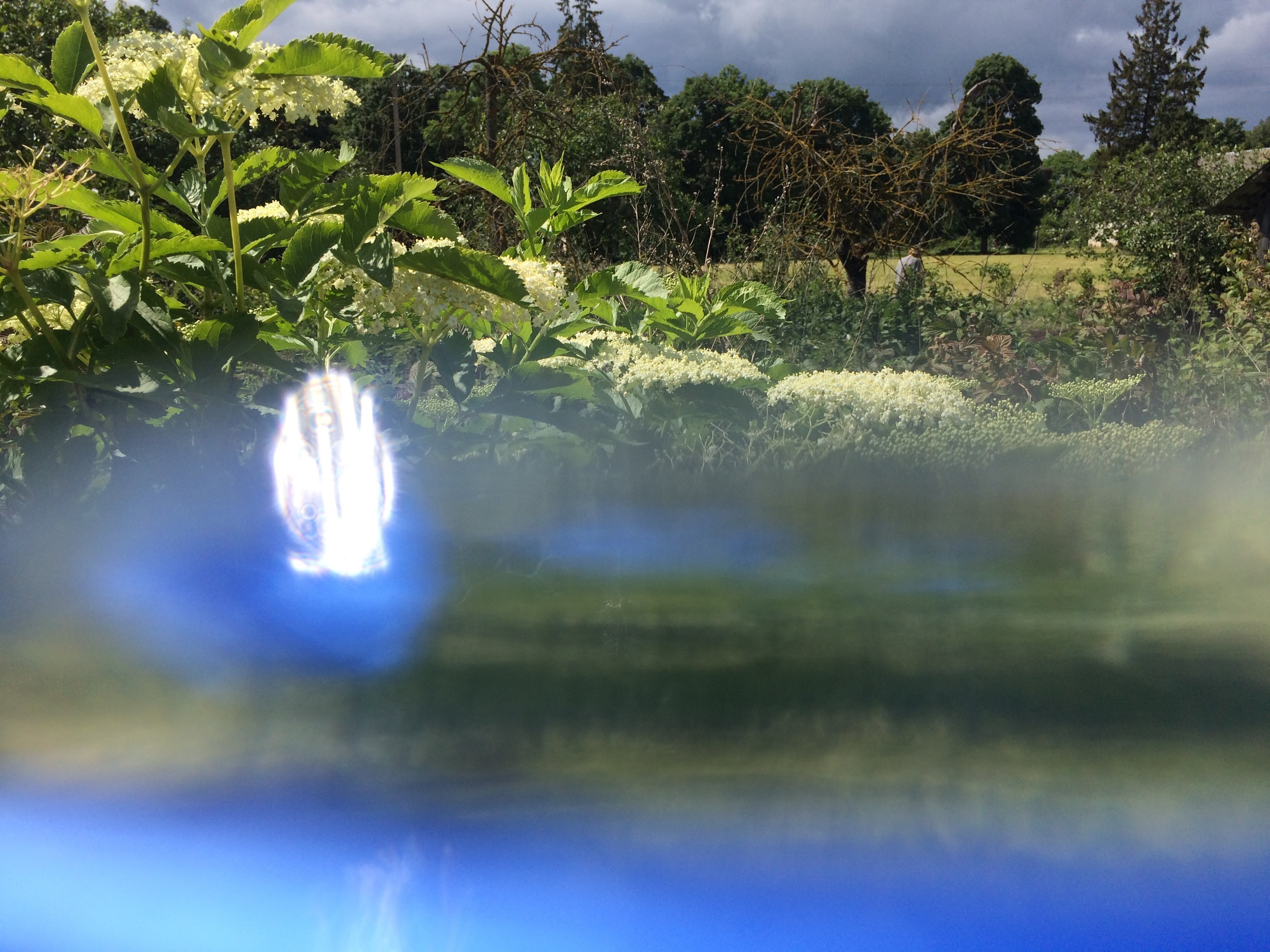 This year Residencyo-yo’s main concentration field – Metabolism. In other words Residencyo-yo will become the center of an organic metabolism. Complex relationships between different organisms can be difficult analysis in the social space, where relationship is generally limited to very clearly hierarchical schemes, which stems from the area with an integrated system of representation. Social space in this case is rejected as stuck exclusive space, which accommodates only appropriately tailored organisms. Meanwhile Residencyo-yo will seek to create a space where full metabolic connection is possible, which happen to be complex and multifaceted. Program of the center will be modeled on a variety of complex social relationships that unfold even more complex structure. Example – Ping pong tournament organization. We invite athletes, sportswomen or other groups (individuals), who explore the limits of the body, her limits by extending overlapping fields. We also invite researchers interested in variety of relationships between organisms and their social environment that make up organisms. All who wish to participate in the residency program, Yo-Yo welcomes proposals of educational programs for development of Metabolism Centre due to March 15th(extended to March 25th). The authors of selected proposals will be notified with certain application form with rules and other information about Residencyo-yo. – The realization of Residencyo-yo program depends on its secured financing, which is at the moment still open. –  *Please keep in mind that there are no application form for this call. You can write an open form plan as you would imagine how you could contribute to Organic Metabolism center. Applicants are expected to give a clear vision/ idea about their program in Organic Metabolism center of Residencyo-yo. Your plans however do not have to be ‘engraved to stone’ so you may change them later if you want. Please note thet we’d like to keep the place a CREATIVE CENTER and prevent it from turning into a “holiday resort”. |
| #19 OPENCALL2018 |
OPEN CALL: 2018.01.01 - 2018. 12.31
RESIDENCY O-YO 2018: THE CENTRE OF ECOCENTRISTS"I am not against progress. I am saying that it is wonderfully catastrophic" (Paul Virilio)So far, in this world with the dominant anthropocentric nature conquest ideology, ecocentrism (not to be confused with egocentrism or eurocentrism) is a term used to highlight the political-ecological philosophy of a nature-oriented system of values that is opposed to anthropocentric - oriented towards a man. Ecocentrism is concerned not so much with the individual form of life as with its interaction; ecocentrism refuses to appreciate the living organisms and their environment through the prism of benefit or importance for the homo sapiens. However, we, Residency o-yo, do not understand eco-centeredness as an anti-humanist principle, constructed in accordance with the humanistic versus anti-humanist dichotomy scheme. We do not want to inspire the creation of a new, united and holistic structure, on the contrary, we call for heterogeneity and diversity, following a rhizomatic and anti-hierarchical idea of multi-species! It is very important to look for link connecting the environmental ecology (fright of climate pollution, tropical deforestation, nuclear energy, etc.) with social and mental ecology. According to philosopher and political activist F. Guattari: “Ecology must stop being associated with the image of a small nature-loving minority or with qualified specialists. Ecology in my sense questions the whole of subjectivity and capitalistic power formations […]”. Therefore, it is important to note that Residency o-yo hosts its residents at the Aikas Žado Laboratory, in Žeimiai Manor House, which is organized as a city of post-residents (ecocentrists), where only observing virtuosos can achieve the full experience and build knowledge. However, it is no longer a living museum where objects of permanent heritage value are decoratively or formally embroiled in historical reconstruction to serve added value; it is simply a space in which the treatment of life itself is once and over again reorganized and the scenario of Earth-globe heritage protection is being created. In 2018/2019, Residency o-yo, as a Centre of Ecocentrists, seeks to inspire its residents - artists, philosophers, social and political activists - to create various ecological scenarios - for transformation and expansion of the relations between people, people and nature, surrounding environment. Frequently artistic residencies are not based on long-term co-operation between artists and their environment, often residents have every chance to distance themselves from the local context. On the contrary, the Residency o-yo will strive to create a space in which a complete metabolic connection is possible - complex and multifaceted. Therefore, if you are determined to create hybrid contemporary art pieces, if you are interested in the interaction between human, science, technology and environment and its assessment from a philosophical, ethical and social perspective, fill in the questionnaire for the selection of the residents and together, while discussing the relation between contemporary artistic practice and ecology, we will search for and/or create new relationships with our vibrant surroundings! APPLICATION FORM Residency o-yo curator, Eglė Ambrasaite residencyoyo@zeimiudvaras.lt |
NEMATOMO ŽMOGAUS KINOTEKA / INVISIBLE MAN CINEMATHEQUE
| #20 Apie KINOTEKĄ |
|
| #21 R. Vaštoko archyvas |
| #22 Žurnalai |
| #23 Kartoteka |
| VHS archyvas |
| #22 Donato Jankausko instaliacija 2017 |
Donato Jankausko instaliacija "Nematomo Žmogaus Kinotekai" (skulptūra "Gėlė"; VHS kasečių lentyna) atspindinti 1986 m. klasika tapusio mokslinio fantastinio filmo "Mažoji siaubų parduotuvėlė" naratyvus ir vizualines klajones. |
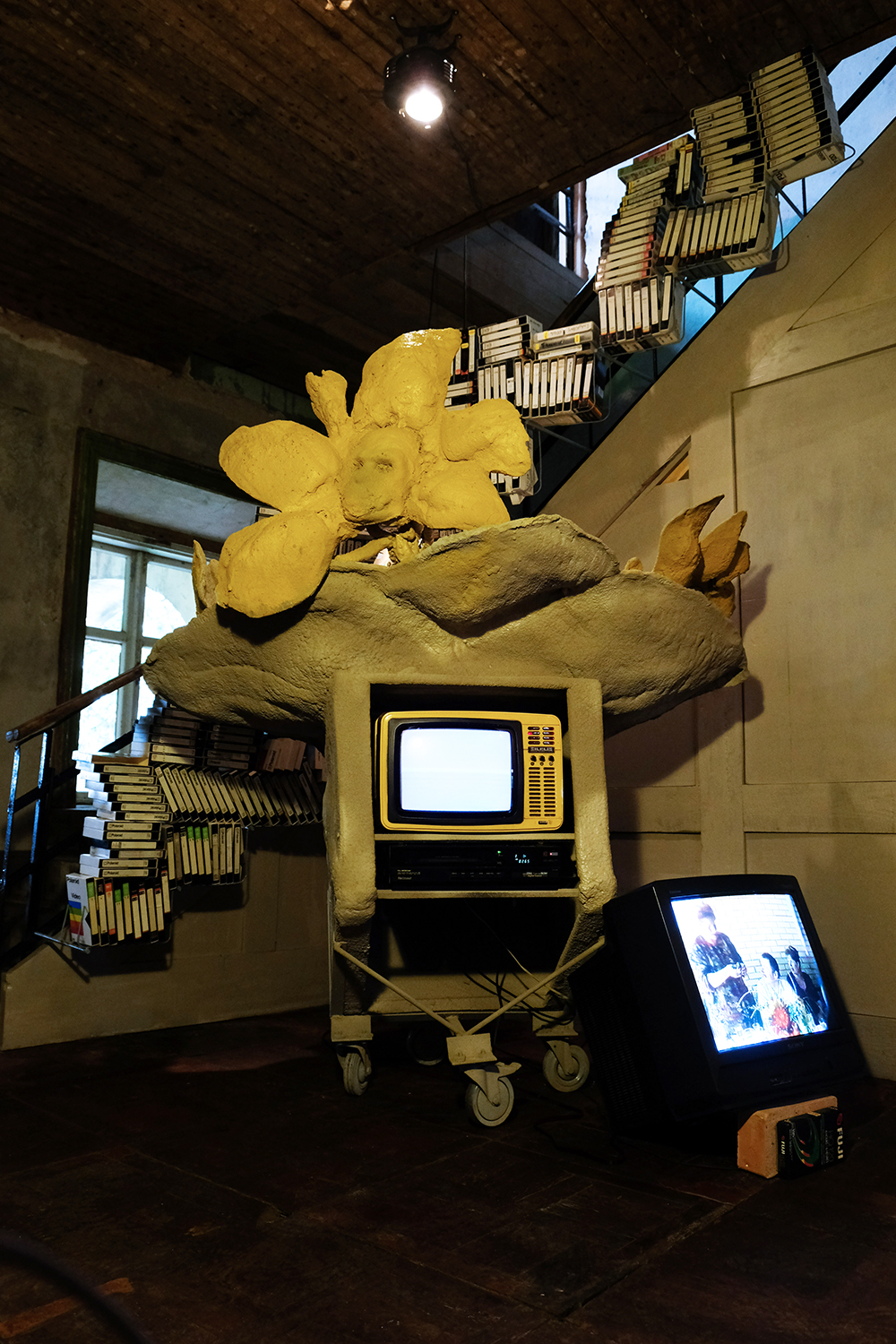 |
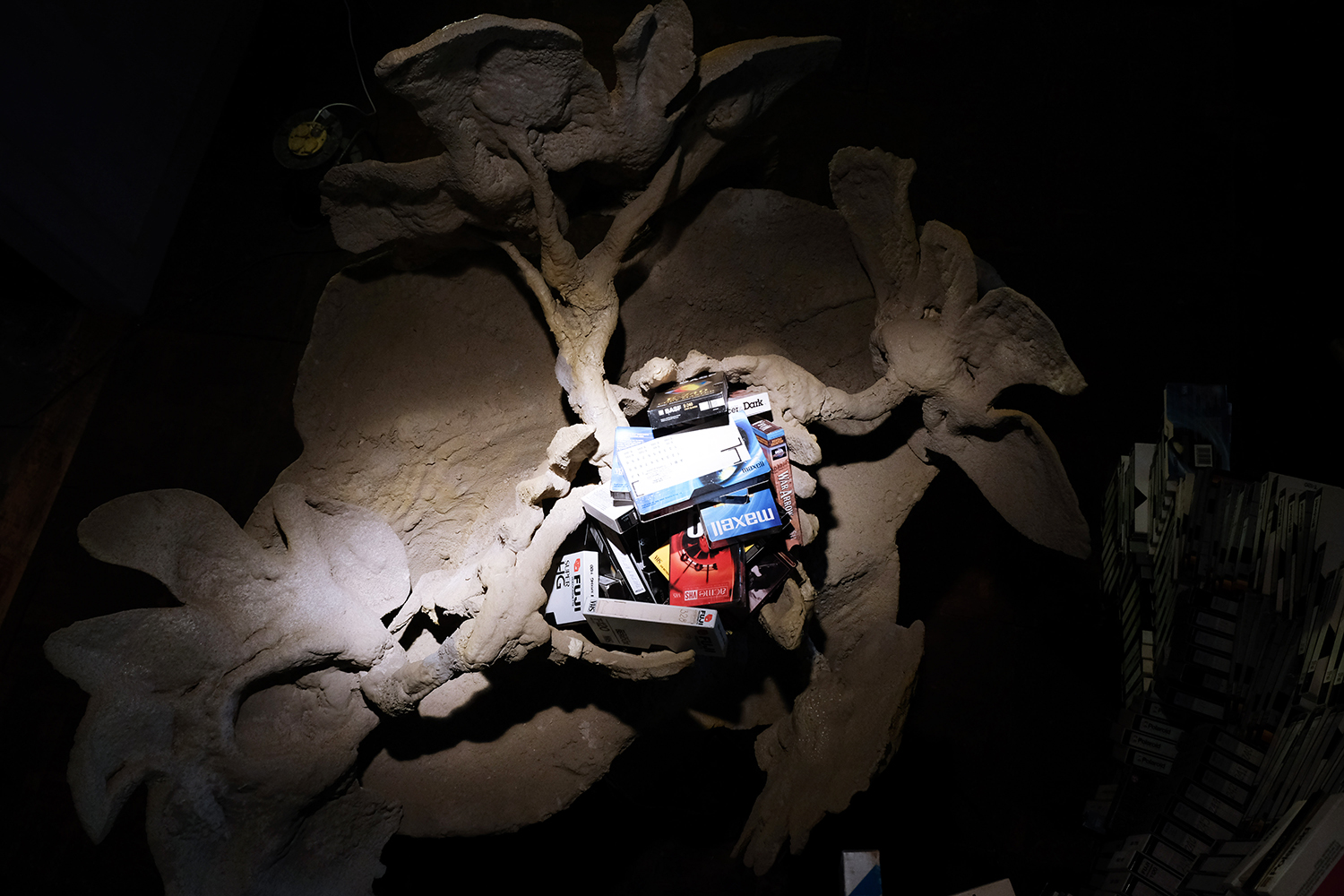 |
| #23 Donatas Jankauskas installation 2017 |
Donatas Jankauskas installation for the "Invisible Man Cinematheque" (Sculpture "Flower"; shelf for VHS cassettes) reflecting on the narratives and visual nomadic journeys of the science fiction film "Little Shop of Horrors"(1986). |
 |
 |
| #24 Leidinys "Video kaukės" 2018 |
|
Tarp 2017 m. rugpjūčio ir 2018 m. balandžio mėnesio šio leidinio autoriams buvo išsiųsti kvietimai duoti interviu, kitaip tariant – rašyti video kaukes. Kvietime buvo nurodyta, kad interviu neturi konkrečios užduoties, bet numato temporalinį kasdieninio gyvenimo kaukės ir video juostos (kasetės) santykio plėtojimą. Pagal sumanymą, inter-viu rašymas turėjo apjungti kaukę ir video juostą kaip praeities įvykio laiko modusus, o rašymo dabartį plėtoti kaip kaukės ir juostos santykio „peržiūrėjimą“. Taigi, „peržiūrėjimas“ šiuo ir visais kitais knygoje paskelbtų tekstų atvejais apima „žvilgsnį į save“, kuris sujungia reprezentacinę kaukės funkciją ir reprezentaciniu ženklinimu įgyvendinamą jos sukūrimo veiksmą. Video kaukių koncepcija apima ir medžiaginę šio leidinio formą. Taip yra todėl, kad kaukės ir video juostos santykis joje pirmiausia yra apibrėžiamas kaip jau įvykęs ir apima nematerialaus įstatymo – kuris taip pat yra ir knyga – paradoksą. Dėl to video kaukės rašymas – tai ir nematerialaus knygos įstatymo keitimas. Prisimename Antonijoni filmo „Zabieskij point“ pabaigą, kurioje grojant Pink Floyd muzikai, vienas iš sprogstančių elementų yra knygos. Kaip tik atsitiktinis jų atsidūrimas vienoje sąmonėje, o ne skirtingų subjektyvumų ir subjektų – vienoje knygoje,įgalina sabotuoti „saviems“ galios diskursams tarnaujančią signifikantų sistemą. Kolektyvinis kaukių rašymas veikia panašiai. Pagal bendrą taisyklę, autoriai nebuvo informuoti apie vienas kito tekstų turinį, bet galutinis produktas jų rašymo sąlygas vis tiek turėjo apimti. Kitaip tariant, rašymas nebūtinai turėjo užsibaigti knygą atitinkančiu leidiniu, o mes fenomenologiškai ir įtariai galime paklausti, ar tai – tikrai „knyga“? Kolektyvinio kaukių rašymo idėja kilo 2017 m. “Aikas Žado” Asociacijai steigiant „Nematomo žmogaus kinoteką“. Žeimių dvaro sodyboje įsikūrusi Asociacija, kurios pavadinimas susideda iš „vardo ir pavardės nuo A iki Ž“ bei žymi aik-telėjimą ir žado praradimą, sodybą ir joje vykstančias interakcijas suvokia kaip vieną, nuolatos kuriamą meno kūrinį. Konceptualią jungtį tarp sodybos teritorijos ir meno kūrinio atlieka Asociacijos įsteigta „Aikas Žado Laboratorija“, apimanti ne tik konkrečios meninės produkcijos gamybą, bet taip pat paveldosaugines sodybos prevencijos ir priežiūros – konservavimo ir restauravimo koncepcijas bei eko-kritinės gamtininkystės idėjas. Kinotekos steigimą paskatino būtinybė įsisavinti daugiausia antropologui prof. Romui Vaštokui anksčiau priklaususių ir 2017 m. asociacijai padovanotų video juostų (VHS) kolekciją. Kinotekos pavadinimas nurodo į nematerialaus įstatymo ir jo įtvirtinimo strategijų (tokių kaip dovanojimas, asmens kulto kūrimas) bei dominavimo kritiką. (A.Gajauskas) Autoriai: Auridas Gajauskas, Valentinas Klimašauskas, Domas Noreika, Aušra Kaziliūnaitė, Albin Werle, Žygimantas Kudirka, Monika Kalinauskaitė, Corin Ward, Tyler Coburn, Styrmir Gudmunson, Antanas Gerlikas  |
| #25 "Video Masks, Masks for the Invisible Man's Cinematheque" 2018 |
|
Between August 2017 and April 2018, the authors of this publication received invitations to give interviews. The invitation specified that the interview does not contain a specific task but anticipates the temporal development of a relationship between the mask of everyday life and a video tape (VHS). According to its conception, the writing of inter-view was supposed to connect the mask and the video tape as modi of the past time and expand the present of writing as “reviewing” of the relationship between the mask and the tape. So, “reviewing”, in this and all texts published in this book, encompasses the “gazing into oneself” which connects the representational function of the mask and the act of representation as designation. The concept of video masks also encompasses the material form of this publication. That is because the relationship of a mask and a video tape is first and foremost defined within it as having already occurred and encompassing the paradox of immaterial law – which is, also, the book. Therefore, the writing of a video mask is also the changing of the immaterial law of the book. We recall the ending of Michelangelo Antonioni’s “Zabriskie Point”, in which, as music by Pink Floyd is playing, books appear amongst the exploding elements. It is precisely their accidental appearance in one consciousness rather than appearance of different subjectivities and subjects in one book that allows for sabotaging the system of signifiers serving “one’s own” discourses of power. Collective writing of masks works in a similar way. Following the same rule, the authors were not informed about the content of each other’s texts, but the final product had to encompass the conditions of writing them. To paraphrase, the writing did not necessarily have to culminate with a publication corresponding to a book and we can ask phenomenologically and suspiciously: is it really a book? The idea of collective mask-writing sprang up in 2017 a “Aikas Žado” association was establishing “The Invisible Man’s Cinematheque”. The Association, housed in Žeimiai Manor House and titled with of “a name and last name from A to Ž”, also marking a ga(s)p and loss of words, perceives the estate and interactions within it as a single, continuously developed artwork. The conceptual connection between the territory of the estate and the artwork is carried out by “Aikas Žado Laboratory”, established by the Association and encompassing not only production of specific artistic output, but also conceptions and practices of prevention and preservation (conservation and restoration) based on eco-critical philosophy and linked to the Žeimiai Manor House as a heritage site. The establishment of the Cinematheque was boosted by the necessity to acquire the collection of video (VHS) tapes which were gifted to the Association in 2017 and mostly belonged to anthropologist and professor Romas Vaštokas. The title of the cinematheque points towards the criticism of domination and immaterial law, as well as strategies of enforcing it (such as gifting and creating a cult of personality). (A.Gajauskas) Authors: Auridas Gajauskas, Valentinas Klimašauskas, Domas Noreika, Aušra Kaziliūnaitė, Albin Werle, Žygimantas Kudirka, Monika Kalinauskaitė, Corin Ward, Tyler Coburn, Styrmir Gudmunson, Antanas Gerlikas  |
| #26 Grupinė paroda „Bio-fantômas’iški seansai“ 2018 |
|
Menininkai:
Domas Noreika (LT), Anna Belousova (RU), Eglė Ambrasaitė (LT), Gailė Griciūtė ir Viktorija Damerell (LT), Jack Finerty (US). Parodos kuratorė:Nematomo žmogaus kinoteka (Eglė Ambrasaitė) Parodos koordinatorius ir gidas:Rokas Vaičiulis Parodos tekstų autoriai:Eglė Ambrasaitė ir Rokas Vaičiulis Foto:Enrika Stanulevičiūtė Ši paroda yra projektų „2018 m. Nematomo žmogaus kinotekos projektai”, „Lankesa: Spaudžiant akceleratoriaus pedalą” ir „McFlurry (request sent)” dalis ir yra remiama Lietuvos kultūros tarybos ir Lietuvos Respublikos kultūros ministerijos. |
| #27 The group exhibition „Bio-fantômas’ic sessions” 2018 |
|
Artists:
Domas Noreika (LT), Anna Belousova (RU), Eglė Ambrasaitė (LT), Gailė Griciūtė ir Viktorija Damerell (LT), Jack Finerty (US). Curator of the exhibition:Invisible Man Cinematheque (Eglė Ambrasaitė) Coordinator and guide of the exhibition:Rokas Vaičiulis The author of exhibition texts:Eglė Ambrasaitė ir Rokas Vaičiulis Photos:Enrika Stanulevičiūtė This exhibition is part of these projects: „The Projects of Invisible Man Cinematheque for 2018”, „Lankesa: Acceleration” and „McFlurry (request sent)” and is funded by Lithuanian Council for Culture and Ministry of Culture of the Republic of Lithuania. |
| #28 Eko-kritinės ekspedicijos ir konservavimo ekspozicijos „Sveiki, aš esu sidabro halogenidas" 2018 |
|
Tai socialinė programa, kurios tikslas besidomintiems paveldo mylėtojams pristatyti Žeimių dvaro sodybos prevencinę konservavimo koncepciją maždaug vienos valandos trukmės ekspedicijose. Šių ekspedicijų dalyviai dokumentuojami, o gauti atvaizdai grupuojami pagal kalendorinę progresiją ir taip kaupiamas Aikas Žado Laboratory kino juostos archyvas (archivuojami atvaizdai spausdinami ir uždaromi dėžutėse penkiasdešimčiai metų)
Skaitmeninė dokumentacija prieinama čia: 

|
| #30 Nematomas Žmogus „Judant geo-istorinio kūno politikos kryptimi“ 2019 |
|
2019 m. Kinotekos pavadinimas skolintas iš de-kolonializmo klausimu besidominčių šiuolaikinių teoretikų - W. Mignolo ir M. Tlostanovos teksto „Theorizing from the Borders“ (2006), kurį galima skaityti kaip manifestą naujos epistemologijos bei daugia-universalių santykių kūrimui, lokalios, kūnu išjaustos geo-istorijos iškėlimui, peržengiant teo- ir ego- logika grįstą patriarchalinį, Eurocentriškąjį žvilgsnį. Todėl, 2019 m. kinotekos projektas yra skirtas populiarinti sociokultūrinės tolerancijos ir tarpkultūriškumo idėjas Žeimių ir aplinkiniuose miesteliuose, kaupti ir kurti naują, su kino filmais susijusią medžiagą, pateikti jos kritinę refleksiją menine, edukacine, filosofine forma. Kitaip tariant, sukurti naujas, papildomas menininko bei žiūrovo santykio su Kinoteka dimensijas – naujus žvilgsnio rakursus, – taip praplečiant Kinotekos meninę, kultūrinę vertę. Idant būtų sukurtas naujas žvilgsnis, būtų permąstyta ši daugialypė, socialinė aplinka, kurioje funkcionuoja Kinoteka, šiame projekte pasitelkiama kultūros industrijoje nedominuojanti Kitokia perspektyva, feministinė, queer, Nematomo Žmogaus optika. Kinoteka (re)aktualizuojama, (re)kontekstualizuojama, (re)konceptualizuojama su ambicijomis permąstyti istoriškai, kultūriškai susiformavusias kategorijas (klasę, rasę, lytį, tautybę, seksualumą, kūną), susikertančias, persipinančias prievartos ir skausmo bei meilės ir malonumo trajektorijas analoginėse ir skaitmenizuotose kino filmo vaizdajuostėse, binarines opozicijas geismo, socialinėse schemose. Taip pat svarbu, jog Nematomo Žmogaus Kinotekos konceptualus komponentas yra istorinis-paveldosauginis kontekstas. Tiek (1) VHS kasetės iš prof. R. Vaštoko kolekcijos, tiek pati (2) Žeimių dvaro sodybos erdvė turi istorinę, kultūrinę, paveldosauginę vertę. Kinoteka, įvietinta ir įveiklinta Aikas Žado Laboratorijoje, yra šių dviejų skirtingų istorinių laikotarpių, kultūrinių kontekstų sintezė, šių skirtingų aplinkų, turinių, materijų sampynos prezentacija, reprezentacija ir performatyvi interpretacija. Projekto perspektyvoje tai galima apibūdinti kaip socialinį, kultūrinį, istorinį-paveldosauginį medžiagiškumą arba, trumpiau, materialųjį Kinotekos kūną. Todėl, kinotekos projekto metu ir toliau tęsiame vykdomą socialinę ir kultūrinę edukaciją Kinotekos (Aiko Žado Laboratorijos) etapų, procesų ir koncepcijos klausimais. Pasiūlymai ir susijusios idėjos laukiamos el. paštu: futurizmaslankesa@zeimiudvaras Registracija į ekspozicijas ir ekspedicijas patvirtinama el. paštu: dngartinstallation@zeimiudvaras.lt arba tel. nr.: +37061002855 |
 |
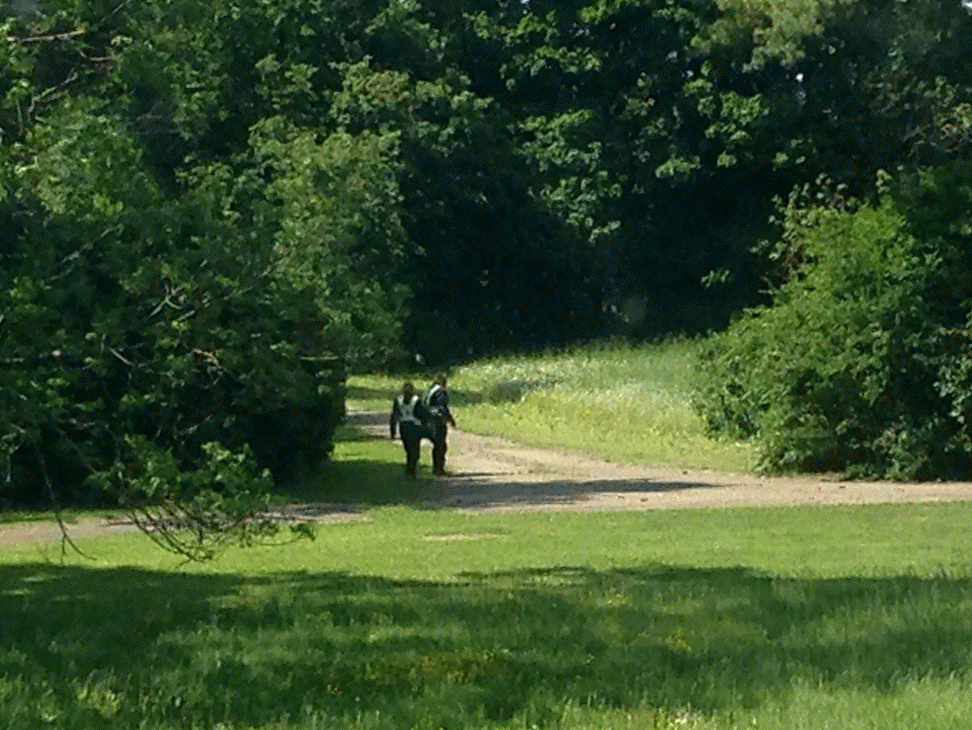 |
NEMATOMO ŽMOGAUS BIBLIOTEKA / INVISIBLE MAN LIBRARY
| #31 Apie BIBLIOTEKĄ |
|
Nematomo žmogaus biblioteka yra kuriamas XVIII amžiaus patalpos protezas sunaikinto Žeimių dvaro sodybos bibliotekos interjero vietoje. šis protezas yra kuriamas iš atskirų tarpusavyje suinstaliuotų dalių pagal išanalizuotus molbertinės tapybos ir kitus ikonografinius analogus bei remiantis senosiomis techninėmis ir medžiaginėmis sampratomis. Projektas atviras restauratoriams, amatininkams, taikomosios ir vaizduojamosios dailės specialistams, molbertinės tapybos profesionalams, medžiagų fizikams bei chemikams ar kitiems besidomintiems specialistams, kuriems butų įdomu bendradarbiauti ir kartu kurti atskiras šio meninio protezo dalis Žeimių dvaro sodybos rezidentūros studijoje "Smugleviche" Protezo Autorius ir rezidentūros studijos vadovas Domas Noreika Pasiūlymų dėl kūrybinio bendradarbiavimo studijoje "Smugleviche" laukiame el. paštu: dngartinstallation@zeimiudvaras.lt arba tel. nr.: +37061002855 |
| #32 Dokumentacija |
| |
| |
| |
| |
| |
| |
| |
| |
| |
| |
| |
| |
| |
| |
LANKESA / LANKESA ACCELERATION
| #28 Lankesa archyvas |
| 80-aisiais - 90-aisiais metais Žeimių dvaro sodyboje veikė eksperimentinis siuvimo baras “Lankesa”. Siuvimo barui iširus, visas siuvyklos inventorius (spintos, kėdės, indai, buteliai, siuvimo mašinos, pasiūti drabužiai, lekalai, dėžės su sagomis, sąsagomis, užtrauktukais, adatomis, siūlai, etiketės, buhalterinės knygos, kvepalų buteliukai, akiniai, žurnalai ir t.t) buvo paliktas Žeimių dvaro sodybos, Aikas Žado Laboratorijos žinioje. 2014 m. siuvyklos inventorius, nuo 2000-ųjų metų keliavęs po visas komplekso pastatų erdves, buvo surinktas, atrūšiuotas, sudėliotas ir pateiktas estetiniam vartojimui Eglės Ambrasaitės instaliacijoje “Lankesa”. Instaliacijoje sukurta siuvimo baro patalpos vizija, sauganti materialiąją šios siuvyklos atmintį. |  |
| #29 Lankesa archive |
| During the 80’s and 90’s an experimental sewing bar - „Lankesa” was operating in Žeimiai Manor House, in a little town of Lithuania, called Žeimiai. After the disintegration of the sewing bar in 1999, the entire inventory (sewing machines, garments, lanterns, tables, chairs, dishes, bottles, boxes with buttons, cufflinks, zippers, needles, threads, labels, booklets, perfume bottles, glasses, magazines and etc.) was left at the disposal of Aikas Žado Laboratory in Žeimiai Manor House. In 2014, the sewing bar’s inventory, having traveled all the complex building spaces since 2000, was collected, sorted and transformed into the installation, - Eglė's Ambrasaitė's vision of the sewing room as an archive that preserves the material memory of this experimental factory. |
 |
 |
 |
 |
 |
 |
 |
 |
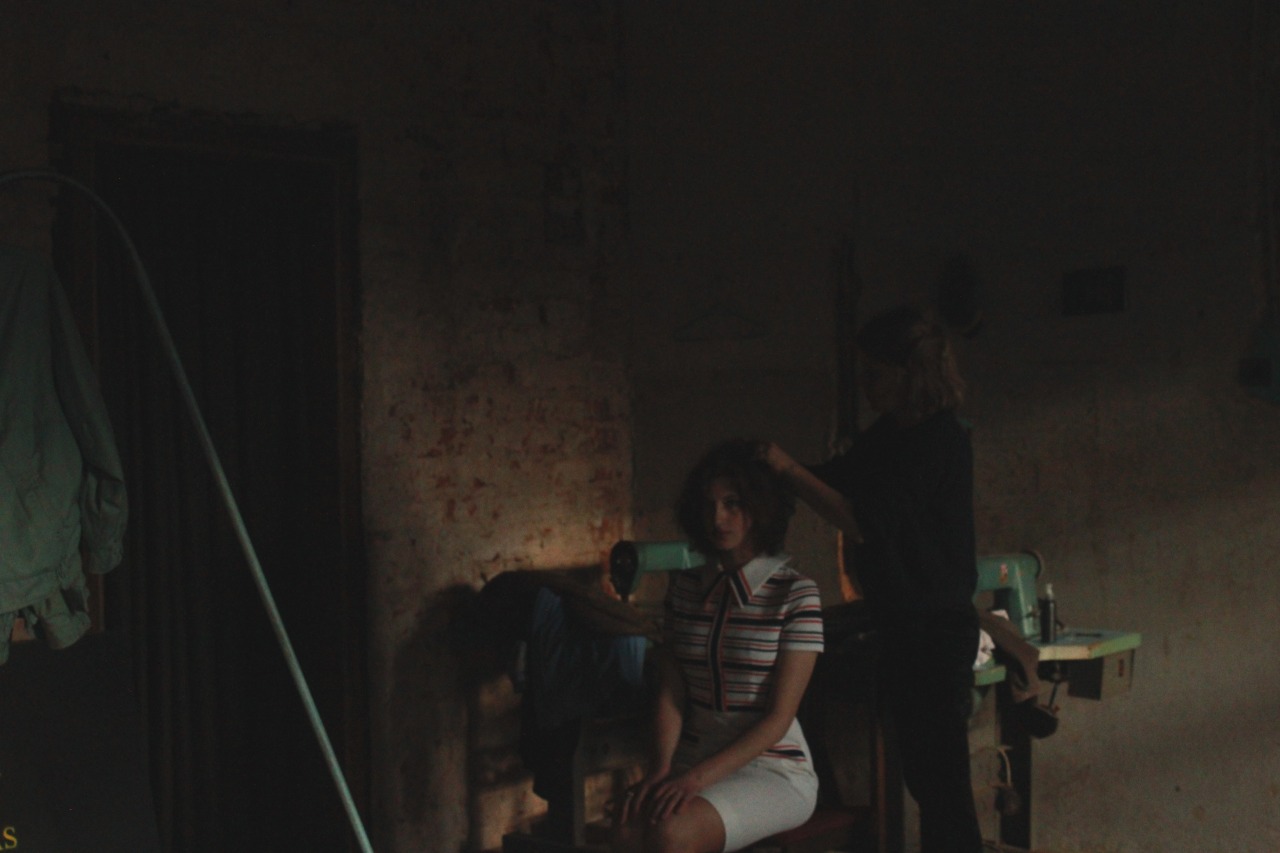 |
| #30 Lankesa manifestas |
| 80-aisiais - 90-aisiais metais Žeimių dvaro sodyboje veikė eksperimentinis siuvimo baras “Lankesa”. Čia buvo siuvami netikėto sukirpimo rūbai, kurie atspindėjo to meto ciniškumo ir nusivylimo nuotaikas. Kiekvienas rūbas tuo metu buvo tarsi vientisas istorinis naratyvas, kurį galima perskaityti ir dabar. Šiandien šie naratyvai yra sumišę su kiekviena ateities akimirka. Laikotarpis, kai gyvenimo būdas nuo 70-tųjų buvo pamirštas, yra pasibaigęs. Šie naratyvai vėl prisikelia ir vėl yra šifruojami ir aktyvuojami konceptualioje parduotuvėje, tuo pačiu pavadinimu - “Lankesa”. Niekas neprasideda iš naujo, tu negali suklastoti savo tapatybės nuo A iki Ž, tokia tapatybė iš karto tampa lengvai dauginama, todėl futuristinė “Lankesa” ne daugina falsifikuotų tapatybių, o bando ratifikuoti tai, kas inskribuota materijoje, šiuo atveju aprangos elementuose. Šiuo atveju galime teigti, jog kiekvienas rūbas, net ir pasiuvamas Kinijos ar Indijos fabrikuose yra unikalus ir užkoduotas, kurio nevalia tiesiog nusipirkti ir išmesti. Tai, kad dabartinė “Lankesa” pasirinko praeities akcentus ateityje tik dar labiau sustiprina išeikvojimo manifestą - viskas yra išeikvojama bet niekas nėra laikina. |
 |
 |
 |
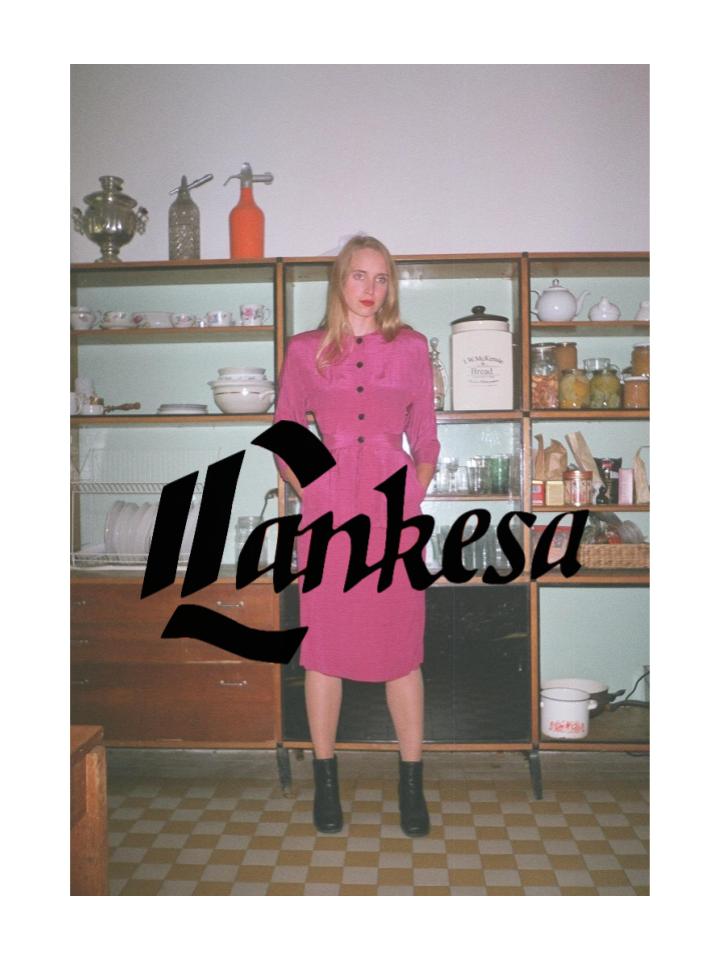 |
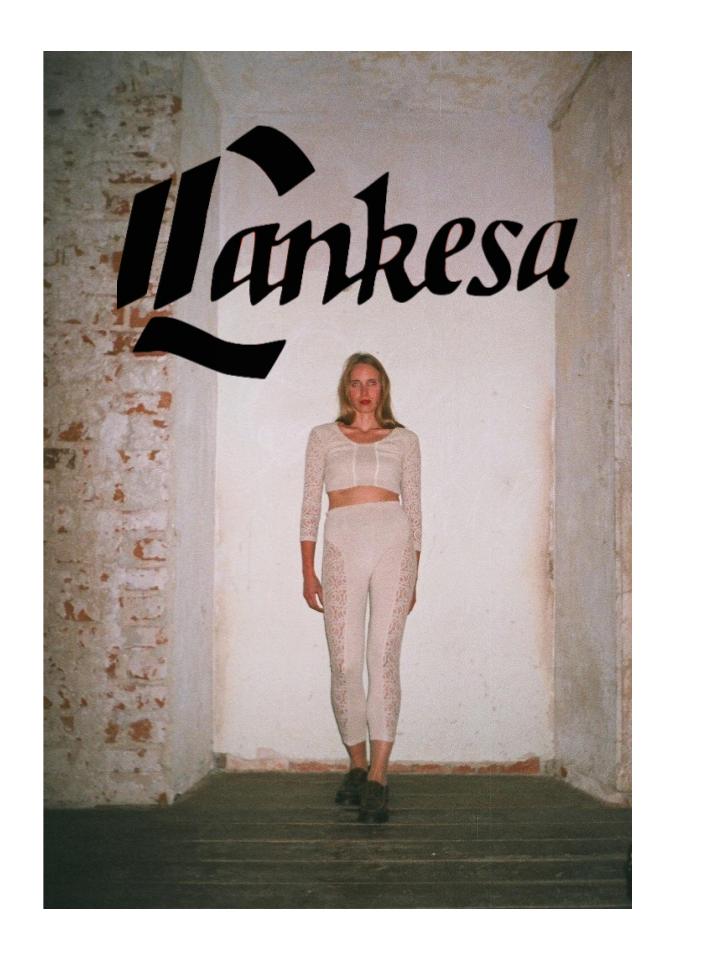 |
 |
| #31 Lankesa manifesto |
| During 80’s and 90’s an experimental sewing bar - “Lankesa” was operating in Žeimiai Manor House. Here was the place, where the unexpectedly cut clothes were made that reflected the cynical and disillusioned mood of the times. Each of the garments at the time was as a solid historical narrative that could be also read nowadays. Today, these narratives are mixed with every moment of a future. The period, when the lifestyle of 70’s was forgotten is over. These narratives revive and are once more ciphered and being activated in a conceptual store with the same title - “Lankesa”. Nothing starts anew, you can not fake your own identity from A to Z, - this kind of indentity straight away becomes easily multiplied, therefore futuristic “Lankesa” does not duplicate the falsified identities, but tries to ratify that, what is inscribed in the matter, in this case in the elements of clothing. Thus, a statement could be made that each of the clothes, even if it is made in the fabrics of China or India, is unique and codified and can not be just bought and wasted. The fact that present “Lankesa” chose the accents of a past in the future even more reinforces the manifest of waste - everything is being dissipated, but nothing is temporary! |
 |
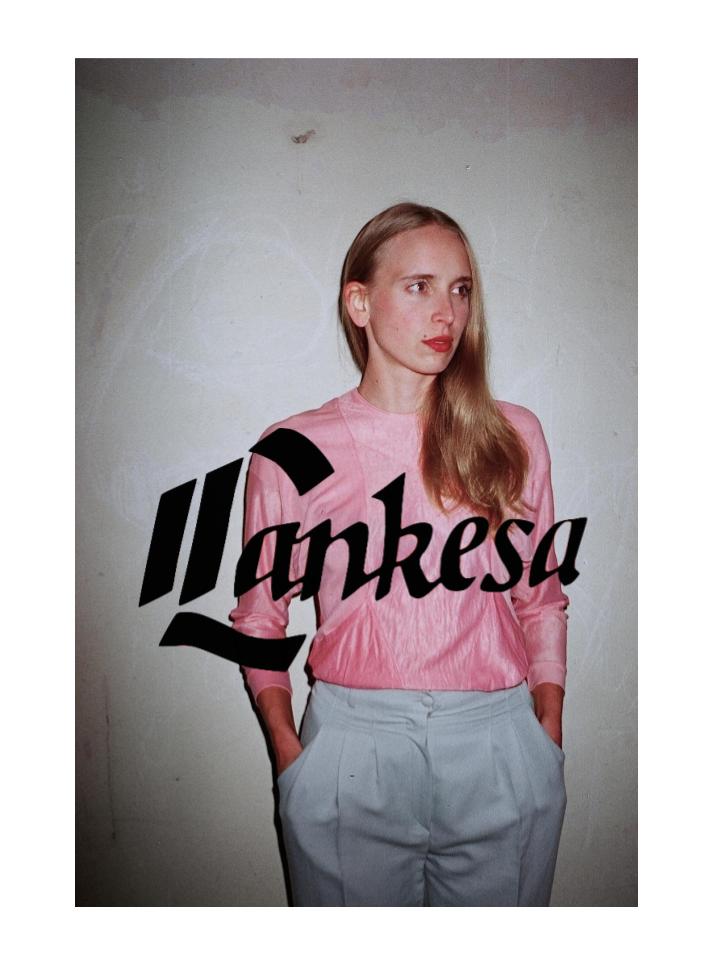 |
 |
 |
| #32 Lankesa Acceleration |
| 80-aisiais - 90-aisiais metais Žeimių dvaro sodyboje veikė eksperimentinis siuvimo baras „Lankesa“. Čia buvo siuvami netikėto sukirpimo rūbai, kurie atspindėjo to meto ciniškumo ir nusivylimo nuotaikas. Kiekvienas rūbas, baldas ar kambarys tuo metu buvo tarsi vientisas istorinis naratyvas, kurį galima perskaityti ir dabar. Šiandien šie naratyvai yra sumišę su kiekviena ateities akimirka. Eglės Ambrasaitės surinktame archyve „Lankesa“ sukurta siuvimo baro patalpos vizija, sauganti materialiąją šios siuvyklos atmintį, o „Lankesa: spaudžiant akceleratoriaus pedalą“ - jos tęsinys - instaliacija bei dokumentinių video darbų ir garso įrašų serija, kuri siekia šiuos naratyvūs šifruoti ir aktyvuoti pasitelkus liudininkus - buvusio siuvimo baro „Lankesa“ darbuotojus - sandėlininkus ir siuvėjus, mechanikus ir direktorius. Darant prielaidą, kad kodinis (latentinis) kapitalizmas liudininko lūpose yra užkoduotas tam tikrais raktažodžiais, „Lankesa: spaudžiant akceleratoriaus pedalą“ siekia padėti atsiskleisti tokiai fantômas’iškai figūrai, kuri šiuose kūriniuose kvestionuoja komunizmo (šiuo atveju melžėjos kostiumo) ir kapitalizmo (šiuo atveju levi’s džinsų) skirtį. Sekdama E. Thacker’iu ir K. Swenson, „Lankesa: spaudžiant akceleratoriaus pedalą“ klausia kaip afektyvūs kūnai yra pripildomi organų ir tampa organizmais ar kitaip, administruojamais dariniais. Kaip veikia afektyvi ortopedija, kuri geba normalizuoti ir homogenizuoti afektus, ar kitaip, kaip veikia mašinos ir mašinerija, kaip teka tepalai? Genderizavimo aparatai čia įtakoja moters poziciją, patirčių perspektyvos atsiskleidžia per feminizuotą/maskulinizuotą darbo sektorius, moteris tampa surogatiniu proletariatu, įkūnydamos buvimą motinomis, mašinomis, monstrais. |
| #33 Lankesa Acceleration |
| During the 80’s and 90’s an experimental sewing bar - „Lankesa” was operating in Žeimiai Manor House, in a little town of Lithuania, called Žeimiai. Here was the place, where the unexpectedly cut clothes were made in reflection to the cynical and disillusioned mood of the times. Each of the garment, furniture or a room at the time was as a solid historical narrative that could be also read nowadays. In 2014, the vision of the sewing room was created by Eglė Ambrasaitė as an archive that preserves the material memory of this experimental factory, while „Lankesa: Acceleration”, as its continuation, an installation and a series of documentary video and audio recordings, seeks to encipher and to activate those narratives by assembling the witnesses - a labour force of the sewing bar, its storekeepers and tailors, mechanics and directors. By making an assumption that capitalism in the era of Soviet Union and during a period of transition is latent and encoded with specific keywords, „Lankesa: Acceleration” aims to assist in unfolding the fantômas’ic figure, which, in this installation, questions a scission of communism (in this case - suits for milkmaids) and capitalism (in this case - Levi’s jeans). Following E. Thacker and K. Swenson, „Lankesa Acceleration” asks how affective bodies are filled with organs (social functions) and are transformed into organisms or, in other words, into administered derivatives? How does affective orthopaedia work, which is capable of normalizing and homogenizing affects, or otherwise, how do machines or machinery work, how does the oil flow? The gender apparatuses here affect the position of a woman, the perspectives of their experience unfold through the feminized / masculinized sectors of labour, a woman becomes a surrogate proletariat, embodying the figurations of a mother, machine, monster. |
 |
 |
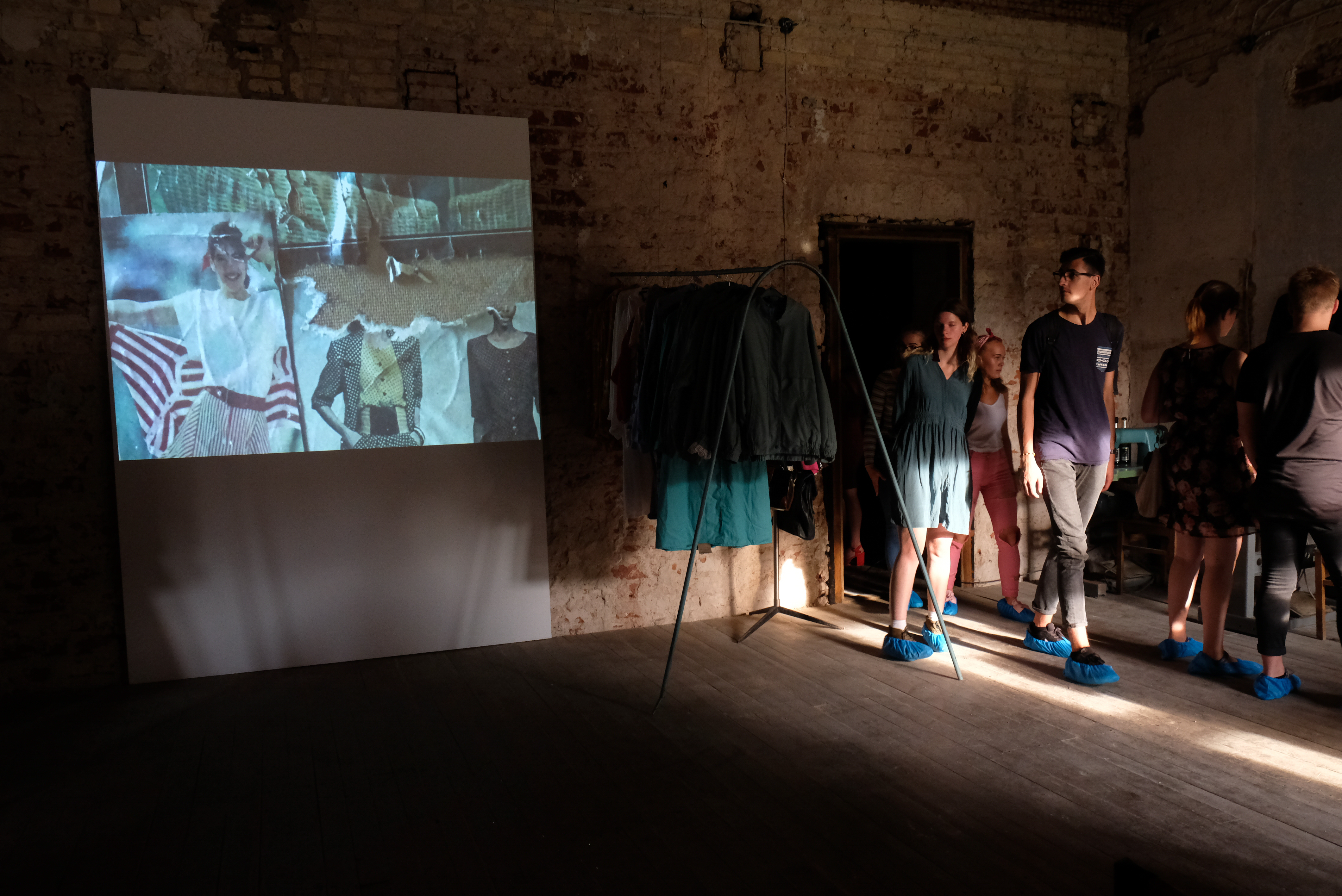 |
 |
 |
 |
 |
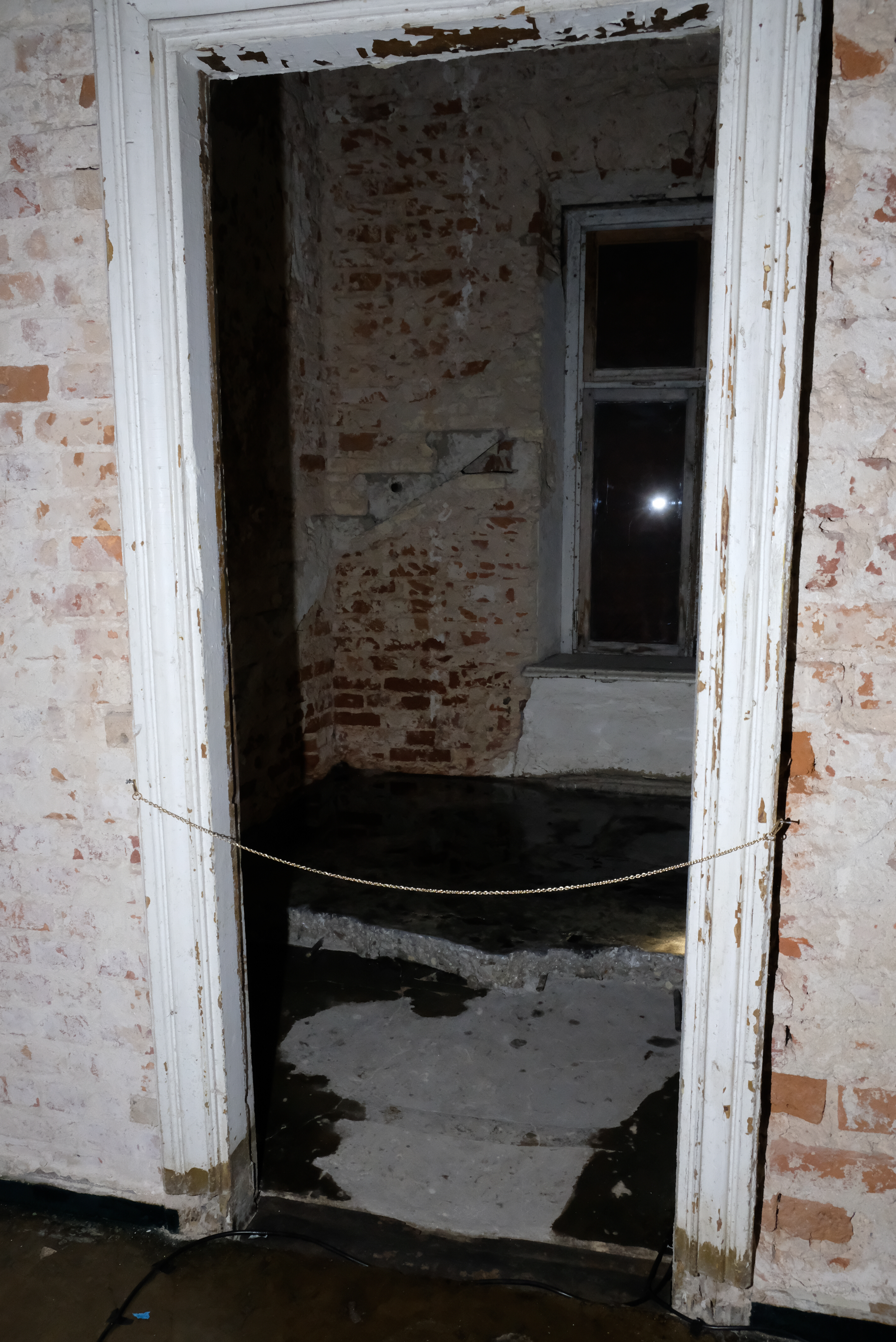 |
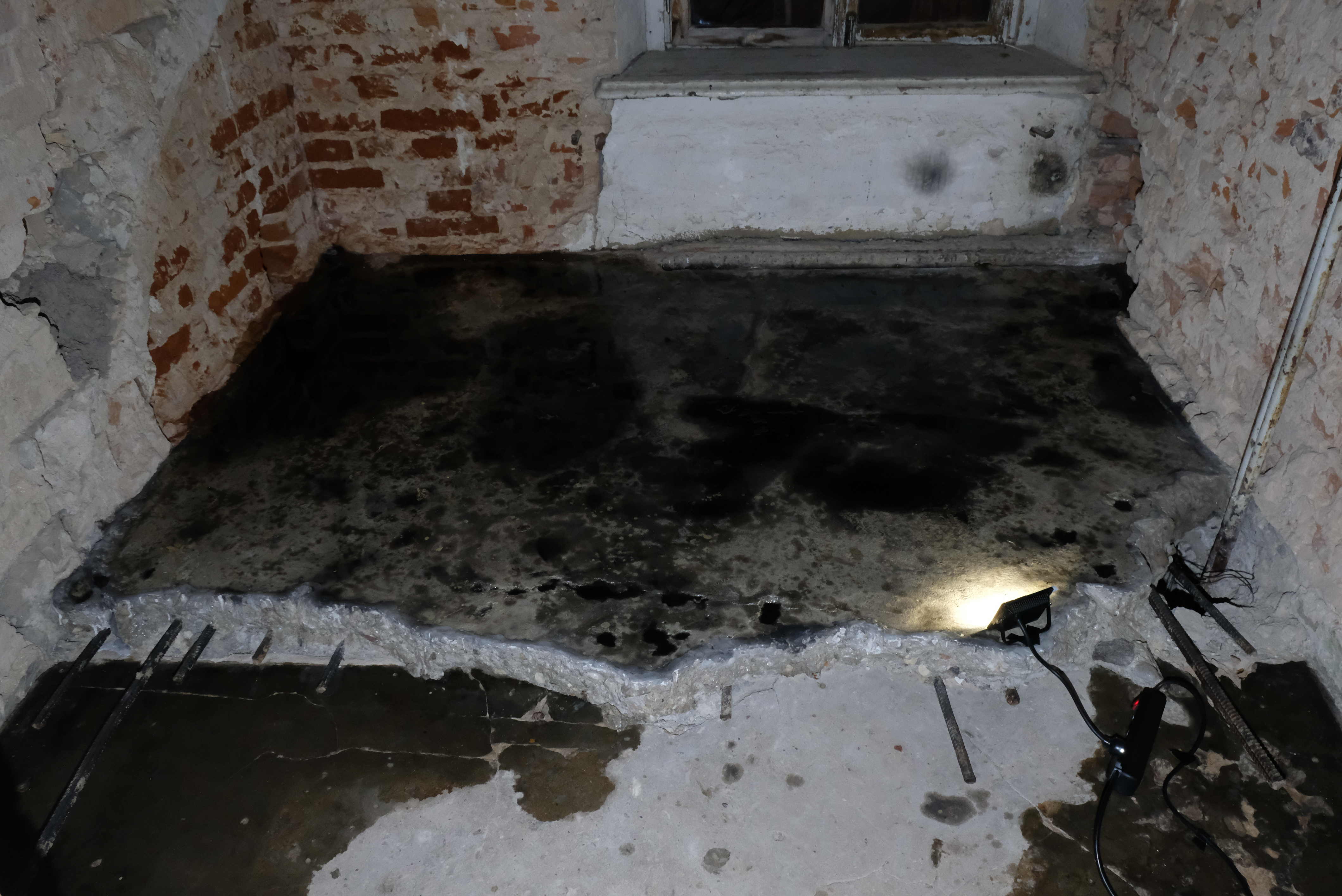 |
 |
 |
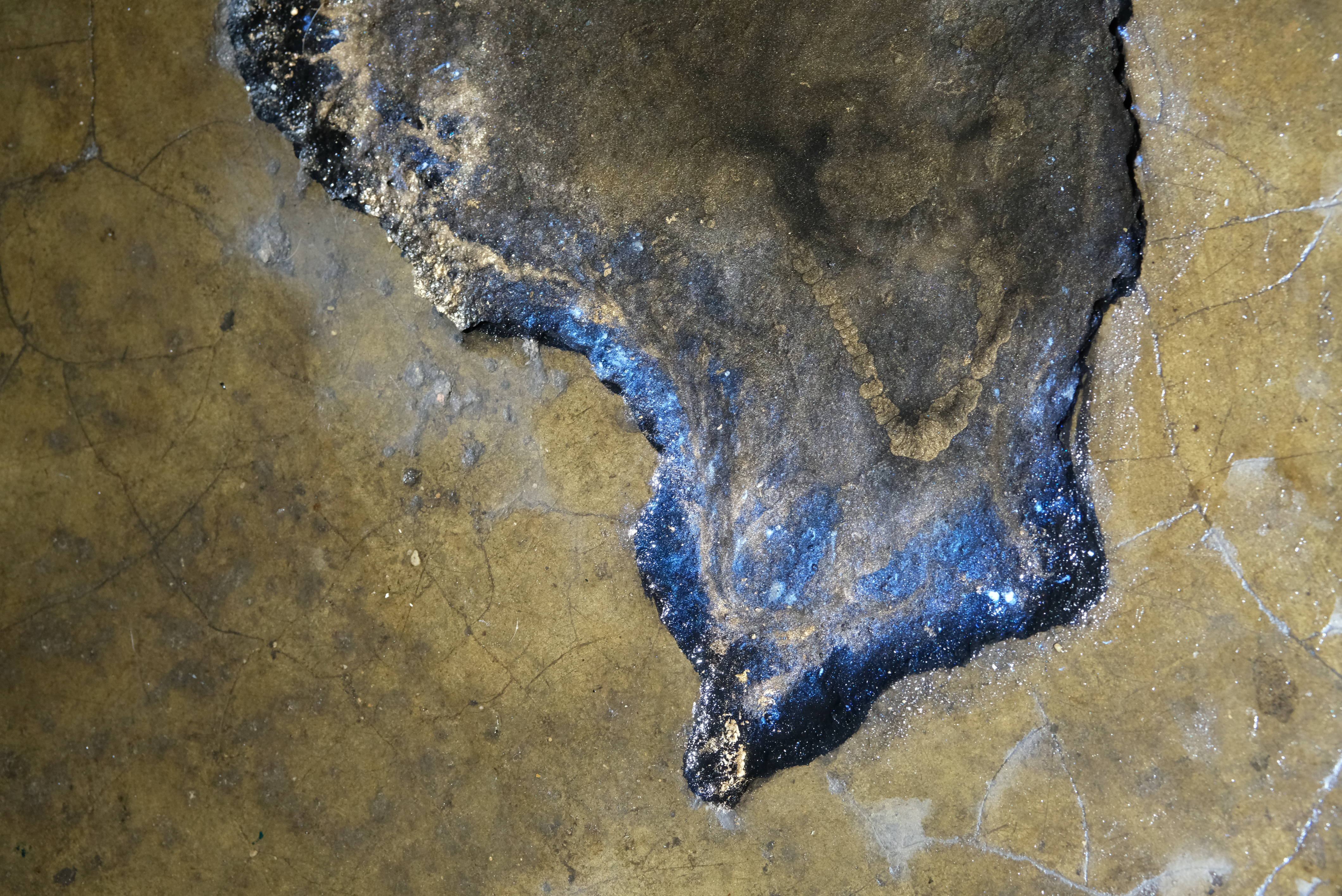 |
 |
 |
 |
 |
 |
 |
 |